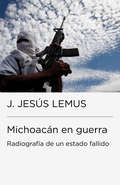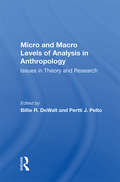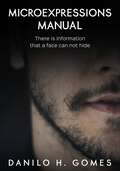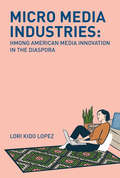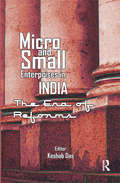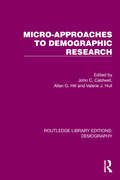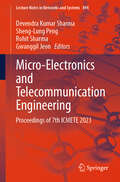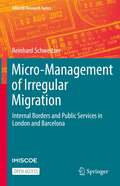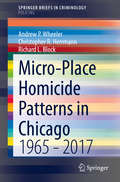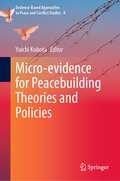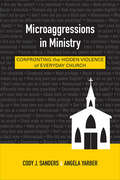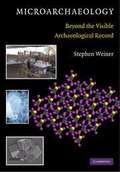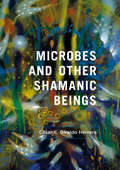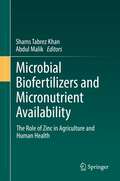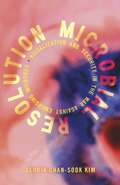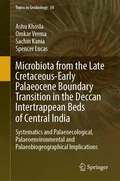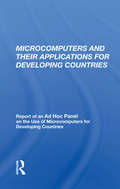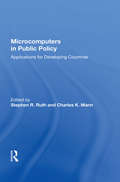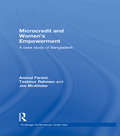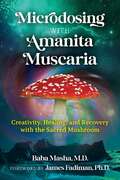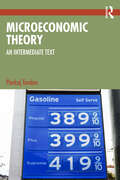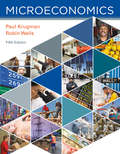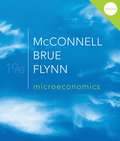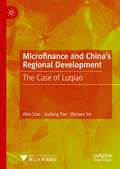- Table View
- List View
Michoacán en guerra
by J. Jesús LemusEste es el resultado de un arduo trabajo periodístico que aborda una de las problemáticas principales de los gobiernos federal y estatal en turno: la violencia en el estado de Michoacán, escrito por uno de nuestros autores más importantes en la actualidad: J. Jesús Lemus. "Bajo el disimulo del gobierno local -asevera Lemus-, la violencia se ha arraigado en Michoacán. Más de 52 grupos civiles armados se encuentran diseminados en la geografía estatal, en los municipios que conforman las regiones de Tierra Caliente, Meseta Purépecha y Sierra Costa Nahua, en donde el desgobierno no sólo es evidente, sino que patentiza una insurrección ciudadana que ha desplazado los poderes del estado." La creciente y cada vez más abrasadora violencia que desgarra al estado de Michoacán -y que se magnificó a partir de la llamada "guerra contra el narco" en el sexenio del panista Felipe Calderón- ha propiciado diversos y desastrosos fenómenos sociales y políticos que ahora ocupan cada día la agenda de los grandes medios de comunicación. El control totalizador de grupos del crimen organizado en la región ha propiciado tanto la desaparición de poblaciones como la creación de los -también mediatizados- grupos de autodefensa. Estos últimos han instaurado en la entidad una situación abiertamente bélica que podría calificarse " como el primer estado fallido de México", de acuerdo con J. Jesús Lemus, el proclamado autor de Los malditos y ahora de este Michoacán en guerra, un intenso e indispensable texto que mezcla reportaje y crónica para explicar los antecedentes inmediatos y penetrar en los más aciagos y funestos detalles de este conflicto del que aún no conocemos su desenlace.
Micro And Macro Levels Of Analysis In Anthropology: Issues In Theory And Research
by Pertti J PeltoArguing that there are insufficient theoretical and methodological guidelines for articulating microlevel and macrolevel analyses of sociocultura1 phenomena, contributors to this volume review the history of micro/macro issues in anthropology and provide a framework for a more systematic examination of potential linkages among levels. In addition,
Micro Expressions Manual: There is information that a face can not hide
by Danilo H. GomesBody language is one of the most complex and effective studies in psychology and psychiatry. Reading human gesture techniques are present in police investigations, psychotherapy clinics, schools and other related places. While generally being assertive, observing body gestures can provide some confusing and ambiguous information. When dealing with micro facial expressions, the chances of getting it right are very high, in addition, your observation provides more accurate information.
Micro Media Industries: Hmong American Media Innovation in the Diaspora
by Lori Kido LopezWith the rise of digital tools used for media entrepreneurship, media outlets staffed by only one or two individuals and targeted to niche and super-niche audiences are developing across a wide range of platforms. Minority communities such as immigrants and refugees have long been pioneers in this space, operating ethnic media outlets with limited staff and funding to produce content that is relevant and accessible to their specific community. Micro Media Industries explores the specific case of Hmong American media, showing how an extremely small population can maintain a robust and thriving media ecology in spite of resource limitations and an inability to scale up. Based on six years of fieldwork in Hmong American communities in Wisconsin, Minnesota, and California, it analyzes the unique opportunities and challenges facing Hmong newspapers, radio, television, podcasts, YouTube, social media, and other emerging platforms. It argues that micro media industries, rather than being dismissed or trivialized, ought to be held up as models of media innovation that can counter the increasing power of mainstream media.
Micro and Small Enterprises in India: The Era of Reforms
by Keshab DasThis book presents a set of analytical and deeply policy-oriented articles on the dynamics of growth and performance of micro and small enterprises in India during the period of reforms. It provides fairly detailed analyses of policy changes for the micro and small enterprises secotr as well as empirical analyses of performance and efficiency of the unorganised manufacturing sector. it examines a range of emerging and persistent complex issues facing this crucial sector including credit, exports, trade regulations, capacity building, subcontracting, clustering, entrepreneurship and rural industrialisation. Focusing on the constraints facing this sector even during the economic reforms, most of the articles analyse how and why special attention, particularly by the state, needs to be paid towards enhancing firm competitiveness. Broad-basing the benefits of policy interventions to the overwhelmingly present yet left out micro enterprises, including rural areas, forms an important concern. This volume attempts to critically examine critical areas of intervention that could open up possibilities of developing a strong micro and small enterprises sector in India.
Micro-Approaches to Demographic Research (Routledge Library Editions: Demography #3)
by Allan G. Hill John C. Caldwell Valerie J. HullOriginally published in 1988, this collection of essays was the first attempt by population scientists to incorporate some of the methods and materials of anthropologists into their work. The essays bridge the gap in the conceptualisation and organisation of field research by 2 sets of social scientists – demographers and social anthropologists – who share an interest in the explanation of particular patterns of population composition and change.
Micro-Electronics and Telecommunication Engineering: Proceedings of 7th ICMETE 2023 (Lecture Notes in Networks and Systems #894)
by Rohit Sharma Sheng-Lung Peng Devendra Kumar Sharma Gwanggil JeonThe book presents high-quality papers from the Seventh International Conference on Microelectronics and Telecommunication Engineering (ICMETE 2023). It discusses the latest technological trends and advances in major research areas such as microelectronics, wireless communications, optical communication, signal processing, image processing, Big Data, cloud computing, artificial intelligence, and sensor network applications. This book includes the contributions of national/international scientists, researchers, and engineers from both academia and the industry. The contents of this book will be useful to researchers, professionals, and students alike.
Micro-Management of Irregular Migration: Internal Borders and Public Services in London and Barcelona (IMISCOE Research Series)
by Reinhard SchweitzerThis open access book provides an analysis of the functioning, consequences and inherent limitations of internalised immigration control. By adopting the perspective of irregular residents as well as local service providers, the book sheds new light on the intricate mechanisms that either help or hinder the diffusion of immigration control into concrete institutional settings, like schools or hospitals. A simple and innovative analytical framework enables the systematic comparison of three different spheres of service provision across two distinct local as well as also national contexts. This is necessary to understand the complex interplay between formal law and policy, the intrinsic rules and logics operating within institutions, and the ethical or practical obligations and constraints attached to particular roles and professions. Based on empirical findings and rigorous analysis, the book argues that internalised control is part of the problem that irregular migration poses for society, rather than constituting a potential solution to it.
Micro-Place Homicide Patterns in Chicago: 1965 - 2017 (SpringerBriefs in Criminology)
by Andrew P. Wheeler Christopher R. Herrmann Richard L. BlockThis brief examines 36,263 homicides in Chicago over a 53-year study period, 1965 through 2017, at micro place grid cells of 150 by 150 meters. This study shows not only long-term historical patterns of homicides in Chicago, but also places that historical context of homicide in reference to the dramatic increases in homicides in 2016-2017. It uses several different inequality metrics, as well as kernel density maps to demonstrate that homicides were more clustered in the 1960’s compared to later periods. Using zero inflated group-based trajectory models, it demonstrates the long-term temporal stability of homicides at micro places. This brief will be of interest to researchers in policing, homicide, and research methods in criminology.
Micro-evidence for Peacebuilding Theories and Policies (Evidence-Based Approaches to Peace and Conflict Studies #8)
by Yuichi KubotaRelying on micro-evidence on the repercussions of civil conflicts, this edited book explores theories and policies of post-conflict peacebuilding. Reconsidering existing knowledge on the civil conflict and peacebuilding processes in particular, it empirically presents the relationships between conflict dynamics and citizens’ norms, values, and preferences in the post-conflict context. Once it occurs, civil conflict brings enormous suffering on the local society. As a consequence of wartime coercion and violence that tear it apart, citizens come to harbor fear, distrust, and hatred of others, especially of those who are in different sociopolitical groups. This can significantly alter the pre-conflict norms and values of the citizenry and make reconciliation difficult across groups in the aftermath of the conflict. To tackle these problems, post-conflict peacebuilding should be well designed so that it can widely cover and sufficiently deal with conflict-affected citizens. This approach urges us to pay serious attention to the individual-level impact of the conflict process and dynamics. The importance of micro-level analysis does not disregard that of normative and/or macro-level approaches to the development of peacebuilding policies. However, the micro-level approach is better able to capture wartime civil–military relations that largely vary between individuals. The book is aimed at linking academic knowledge with policy development in peacebuilding. To reflect existing policy frameworks in peacebuilding, the implications of micro-evidence-based studies for conflict-affected societies are discussed here. A bottom-up approach pursued throughout this book allows us to elaborate desirable policy schemes for peacebuilding that conform to local contexts.
Microaggressions and Modern Racism: Endurance And Evolution
by Charisse C. LevchakMicroaggressions and Modern Racism: Endurance and Evolution explores the causes, manifestations, and consequences of microaggressions, macroaggressions, and modern racism within society. Using surveys and interview data alongside examples in mainstream media, Levchak provides a comprehensive analysis of modern racism on college campuses, in workplaces, and in various media. In so doing, she expands microaggression theory and explores race-based aggression and race relations through sociological and social justice frameworks. The resources offered here have the potential to inform anti-racism policy, programming, and practice that can impact the lives and well-being of all people.
Microaggressions in Ministry: Confronting The Hidden Violence Of Everyday Church
by Cody J. Sanders Angela YarberCarlos—a third-generation U.S. citizen from New Jersey whose family emigrated from Colombia many years before Carlos was born—is often complimented on how articulate he is and asked how long he has been in the United States. <P><P>Deborah, a Certified Public Accountant (CPA) who is up for election as church treasurer, has her qualifications questioned, debated, and scrutinized by the congregation far more than any of her male predecessors who were elected with a simple vote. <P><P>Lisa, a male-to-female transgender person, attends a Sunday school where her classmates continue to refer to her with masculine pronouns (he, him, his). <P><P>The three examples above portray microaggressions: subtle slights, insults, and indignities expressed to persons of varied minority statuses. Although microaggressions are usually unintentional, they occur on a regular basis in education, the workplace, and daily life. <P><P>This is the first book that addresses the concept of microaggressions in ministry and church life. Drawing from their background as ordained clergy, Sanders and Yarber introduce ministry leaders to the concept of microaggressions and look specifically at microaggressions directed at race, gender, and sexuality in the church. Sanders and Yarber help readers become more aware of these subtle and often unconscious communications, offering realistic examples and guidance for grappling with this issue in preaching, religious education, worship, spirituality, and pastoral care and counseling. Microaggressions in Ministry equips congregations with methods for assessment and tools for action that will ultimately help create stronger, more welcoming faith communities.
Microarchaeology: Beyond the Visible Archaeological Record
by Stephen WeinerThe archaeological record is a combination of what is seen by eye, as well as the microscopic record revealed with the help of instrumentation. The information embedded in the microscopic record can significantly add to our understanding of past human behaviour, provided this information has not been altered by the passage of time. Microarchaeology seeks to understand the microscopic record in terms of the type of information embedded in this record, the materials in which this information resides, and the conditions under which a reliable signal can be extracted. This book highlights the concepts needed to extract information from the microscopic record. Intended for all archaeologists and archaeological scientists, it will be of particular interest to students who have some background in the natural sciences as well as archaeology.
Microbes and Other Shamanic Beings
by César E. Giraldo HerreraShamanism is commonly understood through reference to spirits and souls. However, these terms were introduced by Christian missionaries as part of the colonial effort of conversion. So, rather than trying to comprehend shamanism through medieval European concepts, this book examines it through ideas that started developing in the West after encountering Amerindian shamans. Microbes and Other Shamanic Beings develops three major arguments: First, since their earliest accounts Amerindian shamanic notions have had more in common with current microbial ecology than with Christian religious beliefs. Second, the human senses allow the unaided perception of the microbial world; for example, entoptic vision allows one to see microscopic objects flowing through the retina and shamans employ techniques that enhance precisely these kinds of perception. Lastly, the theory that some diseases are produced by living agents acquired through contagion was proposed right after Contact in relation to syphilis, an important subject of pre-Contact Amerindian medicine and mythology, which was treasured and translated by European physicians. Despite these early translations, the West took four centuries to rediscover germs and bring microbiology into mainstream science. Giraldo Herrera reclaims this knowledge and lays the fundaments for an ethnomicrobiology. It will appeal to anyone curious about shamanism and willing to take it seriously and to those enquiring about the microbiome, our relations with microbes and the long history behind them.
Microbial Biofertilizers and Micronutrient Availability: The Role of Zinc in Agriculture and Human Health
by Abdul Malik Shams Tabrez KhanThis volume addresses various issues related to micronutrient deficiency, especially zinc, and discusses the possible approaches for combating mineral deficiency among humans and plants. The book mainly focuses on the zinc biofortification of vegetable and cereal crops and highlights the consequences of zinc deficiency and the health risks associated with zinc deficiency, especially in children and expecting mothers. The authors discuss different types of food that are rich in zinc and other minerals, how diets can be designed to meet the daily zinc requirements, and the impact of zinc deficiency on plant health and quality of agricultural products and the role of micronutrients in abiotic stress tolerance. The book also covers sustainable approaches to zinc biofortification in crops, such as the microbial solubilization of zinc in soil to improve zinc uptake by plants, and the formulation of these microbes into biofertilizers. The book will be of interest to dieticians, agricultural scientists, students and microbiologists.
Microbial Resolution: Visualization and Security in the War against Emerging Microbes (Proximities)
by Gloria Chan-Sook KimAn interdisciplinary study charting the war against microbial futures leads to a new theory of contemporary vision and visuality In 1989, a group of U.S. government scientists met to discuss some surprising findings: new diseases were appearing around the world, and viruses that they thought long vanquished were resurfacing. Their appearance heralded a future perpetually threatened by unforeseeable biological risks, sparking a new concept of disease: the &“emerging microbe.&” With the Cold War nearing its end, American scientists and security experts turned to confront this new &“enemy,&” redirecting national security against its risky horizons. In order to be fought, emerging microbes first needed to be made perceptible; but how could something immaterial, unknowable, and ever mutating be coaxed into visibility, knowability, and operability? Microbial Resolution charts the U.S.-led war on the emerging microbe to show how their uncertain futures were transformed into objects of global science and security. Moving beyond familiar accounts that link scientific knowledge production to optical practices of visualizing the invisible, Gloria Chan-Sook Kim develops a theory of &“microbial resolution&” to analyze the complex problematic that arises when dealing with these entities: what can be seen when there is nothing to see? Through a syncretic analysis of data mining, animal-tracking technologies, media networks, computer-modeled futures, and global ecologies and infrastructures, she shows how a visual impasse—the impossibility of seeing microbial futures—forms the basis for new modes of perceiving, knowing, and governing in the present. Timely and thought provoking, Microbial Resolution opens up the rich paradoxes, irreconcilabilities, and failures inherent in this project and demonstrates how these tensions profoundly animate twenty-first-century epistemologies, aesthetics, affects, and ecologies.
Microbiota from the Late Cretaceous-Early Palaeocene Boundary Transition in the Deccan Intertrappean Beds of Central India: Systematics and Palaeoecological, Palaeoenvironmental and Palaeobiogeographical Implications (Topics in Geobiology #54)
by Spencer Lucas Ashu Khosla Omkar Verma Sachin KaniaThis book describes the microbiota of the intertrappean beds in the Chhindwara District, Madhya Pradesh, India. In this work, special emphasis is placed on the microbiota from the Late Cretaceous-Early Palaeocene transition of the central Narmada River region. Recently, the intertrappean beds of the Eastern Deccan Volcanic Province (one of the subprovinces of the Deccan Volcanic Province) have received considerable attention, which resulted in the addition of some significant biotic assemblages to the existing record from the Dindori-Chhindwara area of the province. The biotic assemblages include charophytes, ostracods, foraminiferans, fishes, frogs, lizards, turtles, crocodiles, and mammals. In spite of the recent discoveries, the known fossil record of the Late Cretaceous-Early Palaeocene biota of India is not sufficient and thus does not permit us to speculate on the possible impact of environmental changes triggered by the Deccan volcanic lava flows on the contemporary biota and to precisely document their palaeoecologic, palaeoenvironmental and palaeobiogeographic implications. The recent biotic reports from the intertrappean beds exposed in the Chhindwara region of the Eastern Deccan Volcanic Province clearly indicate that these beds have a vast potential in terms of fossil content, which could reveal new and dissimilar biotic remains when compared to the Western Deccan Volcanic Province. The record of diverse accumulations of freshwater charophytes, brackish to freshwater ostracods, and planktic foraminiferal and fish assemblages from the intertrappean beds of Jhilmili and adjacent areas of Early Danian (P1a) age and lying just north of Chhindwara town and in the heart of peninsular India has intriguing implications for defining the age limits of the basaltic flows. The occurrence of non-marine taxa, for example, algae, molluscs, and vertebrates, associated with brackish water ostracods in the nearby Singpur and Mohgaon Kalan localities of the Chhindwara region, has also raised concerns about the sedimentary environments of these intertrappean beds. The new finds (presented in this book) prove useful for the better understanding of the palaeoecology and palaeoenvironment of the biota and also throw light on various paleobiogeographic models proposed for the northward drifting Indian plate. The microbiotic assemblages of the intertrappean beds of the eastern Deccan volcanic province at District Chhindwara, Madhya Pradesh are documented in this book. The microbiota of the central Narmada River region, the charophytes, ostracods, planktic foraminifera, and fishes, receive special attention in this study.
Microcomputers And Their Applications For Developing Countries
by National Research Council Office of International Affairs Board On Science Technology for International DevelopmentMicrocomputers are an increasingly important tool in all aspects of development as the need to handle and assimilate vast quantities of information becomes ever more critical for both the international development community and the developing countries. In addition, the microcomputer represents the first significant technological advance that a dev
Microcomputers In Public Policy: Applications For Developing Countries
by Charles K. Mann Stephen R. RuthThis book presents a series of perspectives on the use of automation in the formulation and execution of public policy initiatives in developing nations. It focuses on the use of the most pervasive new automation technology in the developed world—the microcomputer.
Microcredit and Women's Empowerment: A Case Study of Bangladesh (Routledge Contemporary South Asia Series)
by Aminul Faraizi Taskinur Rahman Jim McAllisterUsing a case study of Bangladesh, and based on a long term participatory observation method, this book investigates claims of the success of microcredit, as well as the critiques of it, in the context of women’s empowerment. It confronts the distinction between women’s increasing wealth as a consequence of the success of microcredit programmes and their apparent non-commensurate empowerment, looking at two organisations (the Grameen Bank and the Bangladesh Rural Advancement Committee) as they operate in two localities in rural Bangladesh, in order to discover how enrichment and empowerment are often confused. The book goes on to establish that the well-publicised success stories of the microcredit programme are blown out of proportion, and that the dynamics of collective responsibility for repayment of loans by a group of women borrowers – usually seen to be a tool for the success of microcredit – is in fact no less repressive than traditional debt collectors. This book makes a contribution to development debates; challenging adherents to more closely specify those conditions under which microcredit does indeed have validity, as well as providing insights relevant to South Asian Studies and Development Studies.
Microdosing with Amanita Muscaria: Creativity, Healing, and Recovery with the Sacred Mushroom
by Baba Masha• Shows how Amanita microdoses offered help and healing for a broad range of conditions, including hormonal dysfunction, allergies, gingivitis, heartburn, eczema, psoriasis, depression, epilepsy, hypertension, insomnia, and migraine • Reveals how Amanita microdoses are effective for pain relief and for interrupting addictions to alcohol, opiates, nicotine, caffeine, and other narcotics • Details how to safely identify, prepare, and preserve Amanita muscaria, including recipes for tincture, tea, oil, and ointment as well as proper microdose amounts Exploring the results of the first international study on the medicinal effects of microdosing with Amanita muscaria, the psychoactive fly agaric mushroom, Baba Masha, M.D., documents how more than 3,000 volunteers experienced positive outcomes for a broad range of health conditions as well as enhanced creativity and sports performance. Masha discovered that Amanita microdoses offered help and healing for hormonal dysfunction, low libido, allergies, asthma, swelling, gingivitis, nail fungus, digestive issues, and skin conditions such as eczema and psoriasis as well as recovery from stroke and cardiac arrest. She found beneficial effects on depression, epilepsy, hypertension, insomnia, and low appetite and shows how Amanita microdoses are quite effective for pain relief, including in cases of rheumatoid arthritis, menstrual pain, and migraine. The author also reveals how Amanita microdoses can interrupt addictions to alcohol, nicotine, caffeine, opiates, and other narcotics. The author details how to safely identify, harvest, prepare, and preserve Amanita muscaria, and she includes recipes for tincture, tea, oil, and ointment as well as proper microdose amounts. She shares more than 780 personal Amanita microdose reports from study participants, detailing the positive, negative, and neutral effects they experienced, and she also shares some Amanita large-dose trip reports, cautioning against this practice because of the mushroom&’s strong dissociative properties, including amnesia. Revealing the vast healing potential of this ancient mushroom ally, Masha&’s study shows not only how Amanita can help with many health conditions but also how it activates the ability to feel the value and the significance of your own life experience.
Microeconomic Theory: An Intermediate Text
by Pankaj TandonThis book provides a comprehensive analysis of the theoretical tools, real-world applications, policy implications and corner solutions of microeconomics.It offers a discussion of all significant topics including applications and extension of consumer theory, theory of the firm, production, cost and supply, partial and general equilibrium, welfare economics, uncertainty and information, and market imperfections as well as a detailed overview of the theory of games. Apart from all the topics receiving both the algebraic and geometric treatment, the other distinguishing features of the book are an emphasis on policy implications and a full treatment of corner solutions. This latter feature has arisen out of the realization that students easily master interior solutions by memorizing the standard first-order conditions but do not necessarily understand the underlying concepts. Complete with several original algebraic derivations and graphical expositions, this book will serve as an indispensable textbook for students of microeconomics.The book will be useful to students, researchers, and teachers of economics, international economics, industrial economics, managerial economics, and agricultural economics. It will also be a useful reference for those studying public policy and law.
Microeconomics (Fifth Edition)
by Paul Krugman Robin WellsWhen it comes to explaining fundamental economic principles by drawing on current economic issues and events, there is no one more effective than Nobel laureate and New York Times columnist Paul Krugman and co-author, Robin Wells. In this best-selling introductory textbook, Krugman and Wells' signature storytelling style and uncanny eye for revealing examples help readers understand how economic concepts play out in our world. This new edition is revised and enhanced throughout, including a much stronger array of superior online tools that are part of a complete, integrated online learning system.
Microeconomics (Nineteenth Edition)
by Stanley L. Brue Campbell Mcconnell Sean Masaki FlynnMcConnell, Brue, and Flynn' s Economics: Principles, Problems, and Policies is the #1 Principles of Economics textbook in the world. It continues to be innovative while teaching students in a clear, unbiased way. The 19th Edition builds upon the tradition of leadership by sticking to 3 main goals: Help the beginning student master the principles essential for understanding the economizing problem, specific economic issues, and the policy alternatives; help the student understand and apply the economic perspective and reason accurately and objectively about economic matters; and promote a lasting student interest in economics and the economy. Connect is the only integrated learning system that empowers students by continuously adapting to deliver precisely what they need, when they need it, and how they need it, so that your class time is more engaging and effective.
Microfinance and China's Regional Development: The Case of Luqiao
by Wen Xiao Jiadong Pan Wenwu XieThis book focuses on the innovative development of microfinance in China and takes Luqiao District, Taizhou as the example to sum up Chinese experiences in the local innovative development of microfinance and the application of that experience nationwide. Based on theoretical research regarding microfinance, this book analyzes the history and current situation of the development of microfinance in Luqiao District, and places emphasis on proceeding from three-pronged positioning, five characteristics and three major modes of microfinance’s innovative development in Luqiao District to explore and summarize the Luqiao story of microfinance. Subsequently, this book takes five perspectives—the innovative development of small and medium-sized banks, the innovative development of non-banking financial institutions, the roles of private capital, the policies of the local government and cooperation between the Chinese Mainland and Taiwan—to analyze the experience and paths for helping the development of small and micro enterprises. Finally, based on the conclusions of the research, this book presents some inspirations from the innovative development of microfinance in Luqiao District and future prospects. This book will interest economists, scholars of China’s economic model, and banking sector analysts.
